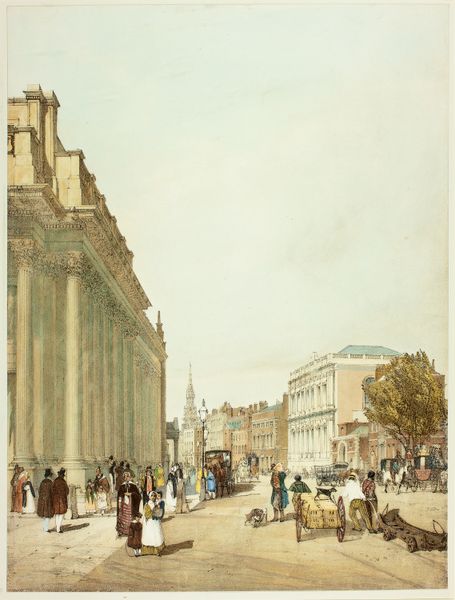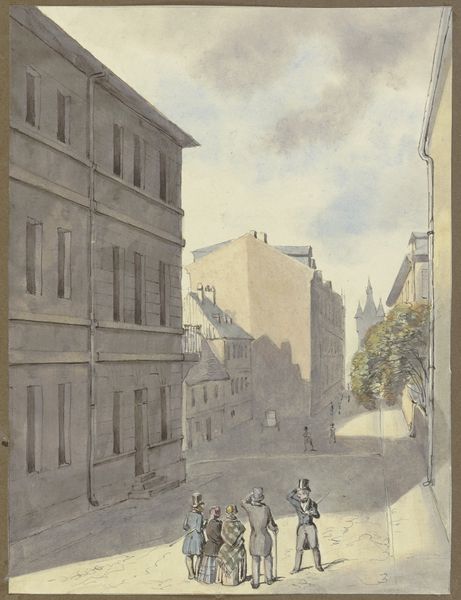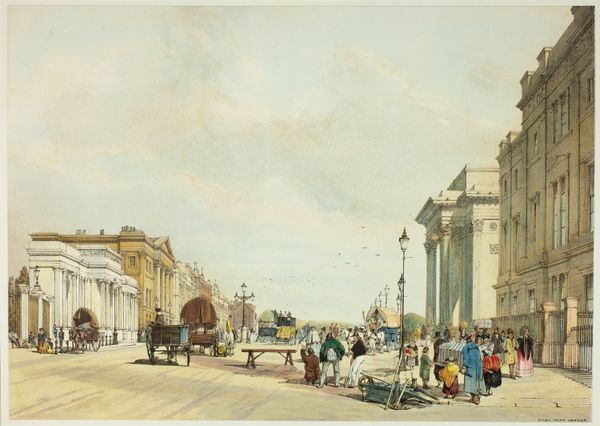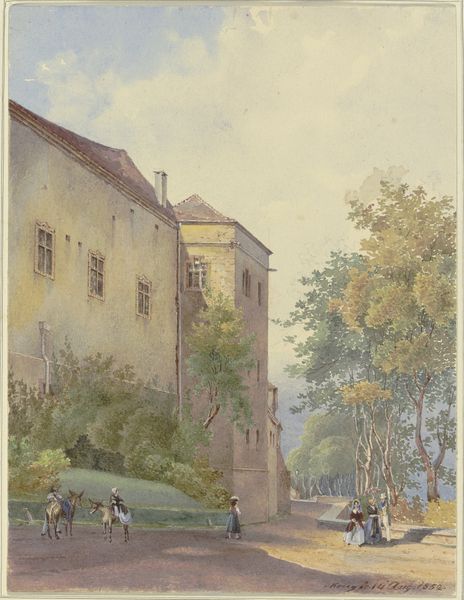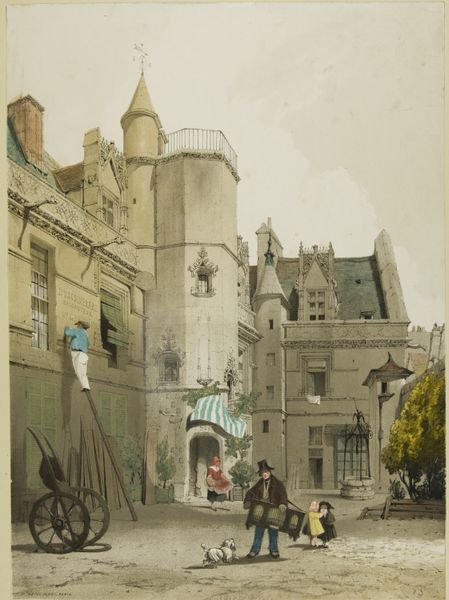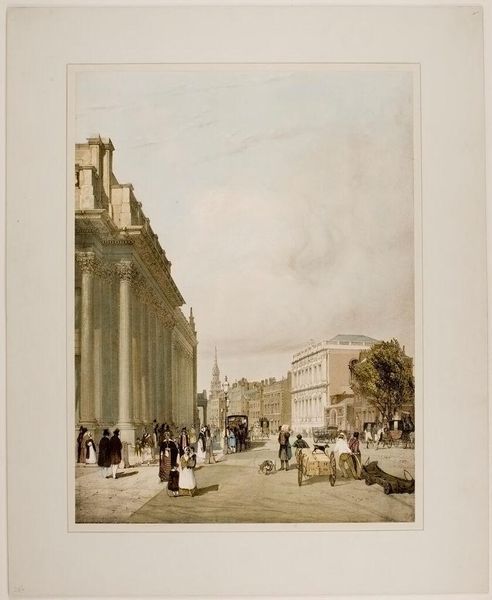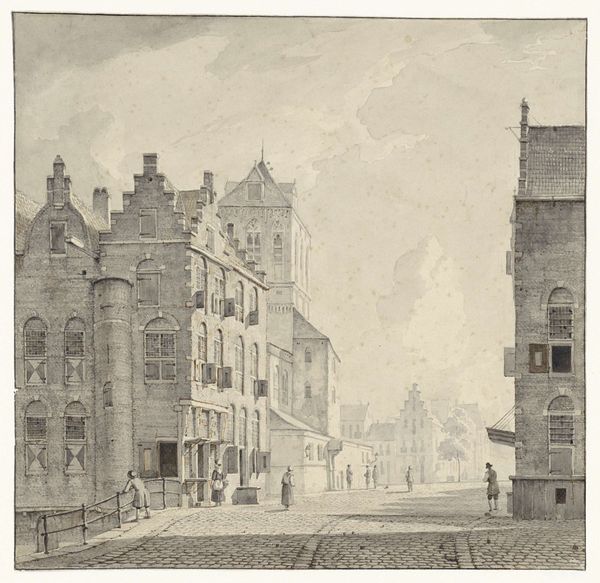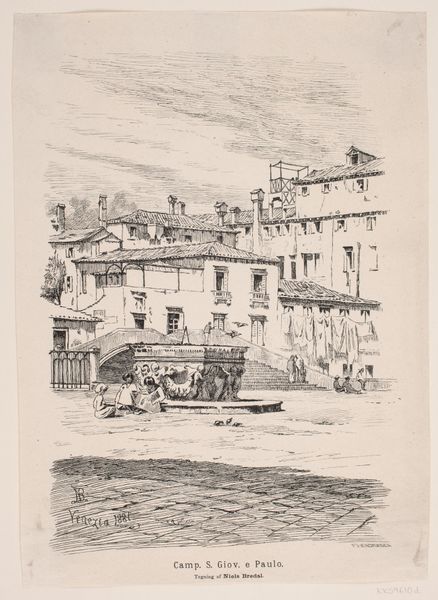
drawing, lithograph, print, paper
#
drawing
#
lithograph
# print
#
landscape
#
paper
#
romanticism
#
15_18th-century
#
cityscape
Dimensions: 344 × 292 mm
Copyright: Public Domain
Thomas Shotter Boys made this watercolor and graphite artwork called 'Pavillon de Flore, Tuileries.' This artwork presents the Pavillon de Flore, which is part of the Louvre Palace in Paris, along with an impression of street life in the foreground. In nineteenth-century France, the Louvre was both a royal palace and a public museum, embodying tensions between power, access, and social class. We see in this image how everyday life unfolds around this grand structure, a point of intersection for commerce, leisure, and political power. Notice the figures in the foreground, from vendors selling goods to bourgeois families promenading. How does the image invite us to consider the relationship between these social actors and the institutions of art and power? Analyzing images like this requires us to consider the social and political forces shaping artistic production and reception, drawing from archival sources, literature, and other historical materials to understand its cultural significance. Art is always contingent on social and institutional context.
Comments
No comments
Be the first to comment and join the conversation on the ultimate creative platform.
